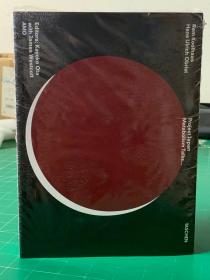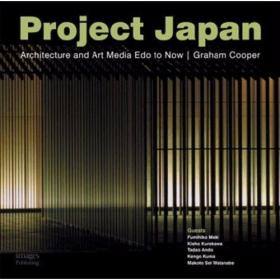
现货 Project Japan: Metabolism Talks... 日本计划 库哈斯
¥ 186 全新
库存10件
出版单位国外
语言英文
开本16开
上书时间2020-12-10
- 在售商品 暂无
- 平均发货时间 7小时
- 好评率 暂无
- 店主推荐
- 最新上架
商品详情
- 品相描述:全新
- 商品描述
- By Rem Koolhaas and Hans Ulrich Obrist Having wandered the ruins of Hiroshima, Tokyo and other Japanese cities after WW II, The Metabolists – four architects, a critic, an industrial designer and a graphic designer – showed with the launch of their manifesto Metabolism 1960 how they would employ biological systems (aided by Japan's massive advances in technology) as inspiration for buildings and cities that could change and adapt to the vicissitudes of modern life. Units could be added or removed from buildings like Kisho Kurokawa’s Capsule Tower in Tokyo as required; buildings themselves could be added or removed from cities at will in the cell-like master-plans of Fumihiko Maki. Project Japan features a series of vivid, empathetic conversations, replete with surprising connections and occasional clashes between Koolhaas and Obrist and their subjects. The story that unfolds is illuminated, contradicted and validated by commentaries from a broad range their forebearers, associates, critics, and progeny, including Toyo Ito and Charles Jencks. Interspersed with the interviews and commentary are hundreds of never-before-seen images: master-plans from Manchuria to Tokyo, intimate snapshots of the Metabolists at work and play, architectural models, magazine excerpts and astonishing sci-fi urban visions. Presented in a clear chronology from the tabula rasa of a colonized Manchuria in the 1930s; a devastated Japan after the war; to the establishment of Metabolism at the 1960 World Design Conference; to the rise of Kisho Kurokawa as the first celebrity architect; to the apotheosis of the movement at Expo '70 in Osaka. Koolhaas and Obrist unearth a history that casts new light on the key issues that both enervate and motivate architecture today: celebrity and seriousness, sustainability and monumentality, globalization, government participation (and abdication), and the necessity for architecture to reach beyond its traditional boundaries in order to embrace the future.
相关推荐
-

现货 Project Japan:Metabolism Talks... 日本计划 库哈斯
九品上海
¥ 170.00
-

现货 Project Japan: Metabolism Talks... 日本计划 库哈斯
全新上海
¥ 176.00
-

现货 Project Japan: Metabolism Talks... 日本计划 库哈斯
全新九江
¥ 150.00
-

Project Japan: Metabolism Talks... 日本计划 库哈斯
全新南京
¥ 165.00
-

Project Japan: Metabolism Talks... 日本计划 库哈斯
全新北京
¥ 166.00
-

Project Japan: Metabolism Talks... 项目日本:新陈代谢讲座
九五品北京
¥ 480.00
-

Project Japan Architecture and Art Media Edo to Now /Graham
八五品保定
¥ 757.00
-
![现货Design: Japan[9781840007794]](https://www0.kfzimg.com/sw/kfz-cos/kfzimg/17733071/3e0b747394bc640d_s.jpg)
现货Design: Japan[9781840007794]
九五品上海
¥ 212.00
-
![现货 Japan Houses[9780804836968]](https://www0.kfzimg.com/sw/kfz-cos/kfzimg/17733071/29dc2ce774624512_s.jpg)
现货 Japan Houses[9780804836968]
九五品上海
¥ 485.00
-
![现货Project: Femme[9780692122181]](https://www0.kfzimg.com/sw/kfz-cos/kfzimg/17733071/6dfdb9bba09b3d41_s.jpg)
现货Project: Femme[9780692122181]
九五品上海
¥ 165.00
— 没有更多了 —






















以下为对购买帮助不大的评价